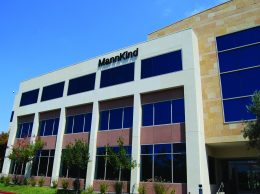Limoneira, Calavo both report earnings growth as produce industry continues recovery
Santa Paula-based agribusinesses Limoneira and Calavo Growers both reported positive earnings in their second quarter financial results released June 8, with both saying their earnings mark a return back to pre-pandemic form.
Limoneira reported earnings of $1.5 million for the quarter, or 10 cents per share, up from a loss of $5.3 million in the same quarter last year, or 29 cents per share. Calavo posted earnings of $8.8 million, or 50 cents per share, up from a loss of $3.3 million, or 19 cents per share, a year earlier.
Second quarter earnings for both companies were released after the markets closed on June 8. Limoneira closed the day at $20.32 and was trading about 3% higher after hours while Calavo closed the trading day at $73.35 and saw its shares drop more than 3% after hours.
For Limoneira, a global grower and supplier of lemons, avocados and other crops, saw a 14% rise in revenue year-over-year. Revenue for the quarter was at $45.1 million, up from $39.6 in the same quarter a year ago.
This growth was primarily driven by a record fresh lemon volume and higher lemon prices, and by increased avocado volume. Revenue from fresh lemons was at $28.7 million, compared to $25.3 million in the second quarter of 2020.
The company sold 1.5 million cartons of fresh lemons in the second quarter at an average price of $18.79 per carton. In the second quarter of 2020, Limoneria sold 1.475 million cartons at an average cost of $17.14.
Limoneira CEO Harold Edwards said that over the past month, the average price per carton of fresh lemons has jumped to $22.
“We’re optimistic and I think very excited to see that demand for fresh lemons returning back to normal,” Edwards said during the company’s June 8 earnings call.
Fresh lemon utilization rates were 75% to 80%, compared to 50% to 55% a year earlier. Edwards said the company hopes to stay within those rates the rest of the year. Lemons that can be sold fresh are more profitable than those that are frozen or processed into juices and other products.
“The real story for us has been the significant improvement in our fresh utilization, which allows us to keep costs low while we enjoy this rapidly inflating pricing environment,” Edwards said.
Avocado sales generated $2.7 million in the second quarter for Limoneira, compared to $2 million in the same quarter last year.
Limoneira sold approximately 2.1 million pounds of avocados at an average price of $1.26 per pound, compared 1.2 million pounds at an average price of $1.64 per pound in the second quarter last year.
One possible downside is that Limoneira could be in a “supply side challenge” for the foreseeable future, but that should not have an effect on its current contracts, Edwards said.
“In these situations, you always wish you had more fruit, but we work very hard to not burn any bridges by making commitments we can’t keep,” he said.
Calavo Growers, a seller of avocados also based in Santa Paula, reported revenue of $276.8 million for the quarter, lower than the $281.1 million it brought in a year earlier.
Still, the $276.8 million was at the high end of the company’s second quarter guidance, indicating that the market is returning to some pre-pandemic norms.
“We’re very pleased to report revenue that was essentially on par with last year, especially considering second quarter 2021 was impacted by the pandemic for the full three months, compared to only one and a half months last year,” Calavo CEO James Gibson said.
Consumer demand continues to grow for avocados, Gibson said, as volume grew 9% in the second quarter, but total revenue still suffered as it was impacted by the lower average selling price, which was down 10% from last year, due to a large harvest from Mexico.
Calavo’s fresh segment sales, which includes avocados, were down 5% from $170.1 million in the second quarter of 2020 to $161.7 million in the same quarter this year.
Sales in Calavo’s Renaissance Food Group brand were up 3% up to $96.3 million. And sales in the food service segment were up 16% due to improving conditions in the industry.
Calavo CFO Kevin Manion said food service accounts for about 20% of the company’s fresh produce sales, while wholesalers make up a little over 6%.
“While we are seeing positive signs as the economy reopens, we have yet to see a full recovery of the foodservice industry, which includes hospitality, lodging, and restaurants and … we are hearing from some of our hospitality customers that they are forecasting a return to normalcy by the fall,” Gibson said. “While we expect our food service business to fully recover, it is likely to take more time and we’re only poised to benefit when it does happen.”
Calavo has also had a hard time with labor, and said it had a negative impact of $4.5 million to $5 million in the quarter as a result of worker shortages. The company has raised pay rates and offered incentive bonuses.
“Our overtime rates are high and we’re running about 20% less people than we would like to have and so that’s a difficult environment nationwide,” Gibson said.












